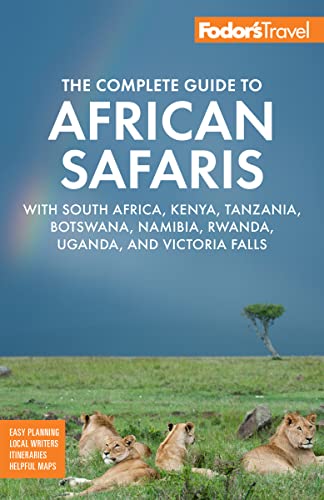Stretching 600 km (370 miles) from just south of Etosha to Usakos in the south and 200 km (125 miles) from east to west, this stark, mountainous area is inland from Skeleton Coast National Park.
You can drive into Damaraland from the park via the Springbokwater Gate or drive from Swakopmund to Uis, where you can visit the Daureb Craft Centre and watch the craftspeople at work, or make it part of your customized safari. A good base for touring southern Damaraland is the little town of Khorixas. From here you can visit the Organ Pipes, hundreds of angular rock formations, or watch the rising or setting sun bathe the slopes of Burnt Mountain in fiery splendor. You'll find yourself surrounded by a dramatic landscape of steep valleys; rugged cliffs of red, gray, black, and brown; and towering mountains, including Spitzkoppe (Namibia's Matterhorn, which towers nearly 610 meters [2,000 feet] above the plains), where Damara guides will show you the Golden Snake and the Bridge—an interesting rock formation—and the San paintings at Bushman's Paradise. There are more spectacular rock paintings at Brandberg Mountain, especially the famous White Lady of Brandberg at Tsisab Gorge, whose depiction and origin have teased the minds of scholars for decades. (Is she of Mediterranean origin? Is "she" really a "he" covered in white initiation paint?)
Other stops of interest are the Petrified Forest, 42 km (25 miles) west of Khorixas, where the corpses of dead trees lie forever frozen in a bed of sandstone. The first UNESCO World Heritage Site in Namibia, Twyfelfontein, 90 km (56 miles) west of Khorixas, is also the biggest outdoor art gallery in the world, where thousands of rock paintings and ancient rock engravings are open to the sky. It's extremely rare for this many paintings and engravings to be found at the same site. As you approach, you'll see scattered boulders everywhere—a closer examination will reveal thousands of rock paintings and engravings. Get yourself a local, knowledgeable guide when you arrive, and try to give yourself a full day here. Start early (it's hard to pick out some of the art in full sunshine), bring binoculars, wear sturdy shoes, and bring water (at least a gallon) and a hat.
Northern Damaraland consists of concession areas that have been set aside for tourism, with many tourist operators working hand in hand with the local communities. This is a desert of a different kind from the classic sand dunes of the Namib. It's a landscape of almost unsurpassed rugged beauty formed by millions of years of unending geological movement. Vivid brick-red sediments complement gray lava slopes punctuated by black fingers of "frozen" basaltic rock creeping down from the jagged rocky horizons. Millions of stones, interspersed with clumps of silvery-gray shrubs and pioneer grass, litter the unending slopes, hillsides, and mountain faces. There seem to be as many rocks, huge and small, as there are grains of sand on the beaches of the windswept, treacherous Skeleton Coast, some 90 km (56 miles) to the west. But there’s life, and plenty of it, in this seemingly inhospitable landscape, including dozens of Welwitschia mirabilis—plants that can live for up to 1,000 years. Stop at a 500-year-old "youngster" and consider that when this plant was a newborn, Columbus was sailing for the New World and the Portuguese to Namibia.
The landscape is also dotted with colorful lichen fields, dark-green umbrella-shape camelthorn trees, candelabra euphorbias raising their prickly fleshy arms to the cloudless sky, saltbushes, and the ubiquitous shepherd's tree. Also here is the moringa tree—the "enchanted" tree, so-called because according to San legend, the god of thunder, not wanting moringa trees in heaven, pulled them all up and threw them out. They fell upside down into the earth, looking like miniature baobab trees. In the middle of this rocky desert rubble is Slangpost, a small, verdant oasis in the middle of what seems to be nowhere (not even the mountains have a name in this part of the world; they're referred to simply as the "no-name mountains"). Look out for traces of the amazing desert elephants (sometimes called the desert-adapted elephants), their huge footprints trodden over by the healthy herds of goats and sheep belonging to the local Damara farmers. Your best chance of seeing the elephants is along the surprisingly green and fertile dry Huab River bed, where they browse on the large seedpods of the Ana tree and whatever else they find edible. The great gray shapes silhouetted against the dry river's sandy mounds ringed by mountains and sand dunes are an incredible sight.
The Kaokoveld, north of Damaraland, although enticing because it’s pristine and rarely visited, is also inhospitably rugged. Self-drives are for the really intrepid, do-it-yourself explorer.






